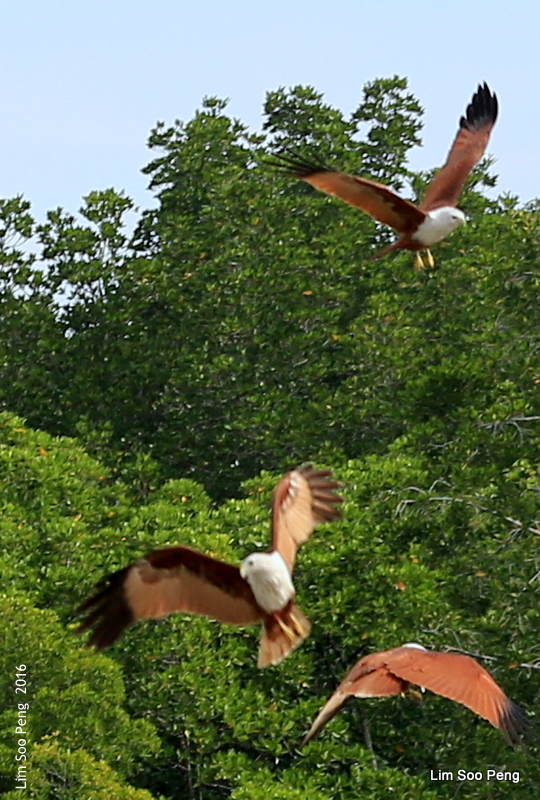
Photo-shooting of eagles seemed simple and easy but it turned out almost all the photographs are out of focus. So must manipulate a bit as I do not use photoshop. This is my very first attempt to photo-shoot these eagles from a boat using a 70-200 mm lens. Most photographs taken are out of focus and small in size, A lot of cropping was done and a speed of 1/2500 second was used in all the photographs. Normally, I just involve myself with the easier task of street photography for my blog, shooting of the street opera performances, some concert in audiotoriums, some events and lesser strenous stuff.
From Wikipedia:-
Eagle
Eagle is a common name for many large birds of prey of the family Accipitridae; it belongs to several groups of genera that are not necessarily closely related to each other.
Most of the 60 species of eagles are from Eurasia and Africa. Outside this area, just 14 species can be found – two in North America, nine in Central and South America, and three in Australia.
Description
Eagles are large, powerfully built birds of prey, with a heavy head and beak. Even the smallest eagles, like the booted eagle (Aquila pennata) (which is comparable in size to a common buzzard (Buteo buteo) or red-tailed hawk (B. jamaicensis)), have relatively longer and more evenly broad wings, and more direct, faster flight – despite the reduced size of aerodynamic feathers. Most eagles are larger than any other raptors apart from some vultures. The smallest species of eagle is the South Nicobar serpent eagle (Spilornis klossi), at 450 g (0.99 lb) and 40 cm (16 in). The largest species are discussed below. Like all birds of prey, eagles have very large hooked beaks for tearing flesh from their prey, strong muscular legs, and powerful talons. The beak is typically heavier than that of most other birds of prey. Eagles’ eyes are extremely powerful, having up to 3.6 times human acuity for the martial eagle, which enables them to spot potential prey from a very long distance. This keen eyesight is primarily attributed to their extremely large pupils which ensure minimal diffraction (scattering) of the incoming light. The female of all known species of eagles is larger than the male.

Eagles normally build their nests, called eyries, in tall trees or on high cliffs. Many species lay two eggs, but the older, larger chick frequently kills its younger sibling once it has hatched. The dominant chick tends to be a female, as they are bigger than the male. The parents take no action to stop the killing.

Due to the size and power of many eagle species, they are ranked at the top of the food chain as apex predators in the avian world. The type of prey varies by genus. The Haliaeetus and Ichthyophaga eagles prefer to capture fish, though the species in the former often capture various animals, especially other water birds, and are powerful kleptoparasites of other birds. The snake and serpent eagles of the genera Circaetus, Terathopius, and Spilornis predominantly prey on the great diversity of snakes found in the tropics of Africa and Asia. The eagles of the genus Aquila are often the top birds of prey in open habitats, taking almost any medium-sized vertebrate they can catch. Where Aquila eagles are absent, other eagles, such as the buteonine black-chested buzzard-eagle of South America, may assume the position of top raptorial predator in open areas. Many other eagles, including the species-rich Spizaetus genus, live predominantly in woodlands and forest. These eagles often target various arboreal or ground-dwelling mammals and birds, which are often unsuspectingly ambushed in such dense, knotty environments. Hunting techniques differ among the species and genera, with some individual eagles having engaged in quite varied techniques based their environment and prey at any given time. Most eagles grab prey without landing and take flight with it so the prey can be carried to a perch and torn apart.

The bald eagle is noted for having flown with the heaviest load verified to be carried by any flying bird, since one eagle flew with a 6.8 kg (15 lb) mule deer fawn. However, a few eagles may target prey considerably heavier than themselves; such prey is too heavy to fly with, thus it is either eaten at the site of the kill or taken in pieces back to a perch or nest. Golden and crowned eagles have killed ungulates weighing up to 30 kg (66 lb) and a martial eagle even killed a 37 kg (82 lb) duiker, 7–8 times heavier than the preying eagle. Authors on birds David Allen Sibley, Pete Dunne, and Clay Sutton described the behavioral difference between hunting eagles and other birds of prey thus (in this case the bald and golden eagles as compared to other North American raptors).
























































































































































































































































Interesting bit about eagles. You certainly have a lot of them where you live, although southeast Asia wasn’t one of the places your article said eagles lived. What are the names of these eagles?
LikeLiked by 1 person
Hehehe, just took the photos but do not know the name of these eagles.
LikeLiked by 2 people
Great done! Birds are difficult to photograph. They are flying and turning so fast.
LikeLiked by 1 person
Could be better as some pros said concentrate only on a few birds. The other is to concentrate on a spot and do not move from there – wait for the eagle to come by.
LikeLiked by 1 person
A lot of patience is needed.
LikeLike
a bird flying very hard to capture good job!!! jackie
LikeLiked by 1 person
I did try but some “enlargement” looked reasonable but not too big as blurry image will emerge.
LikeLiked by 1 person